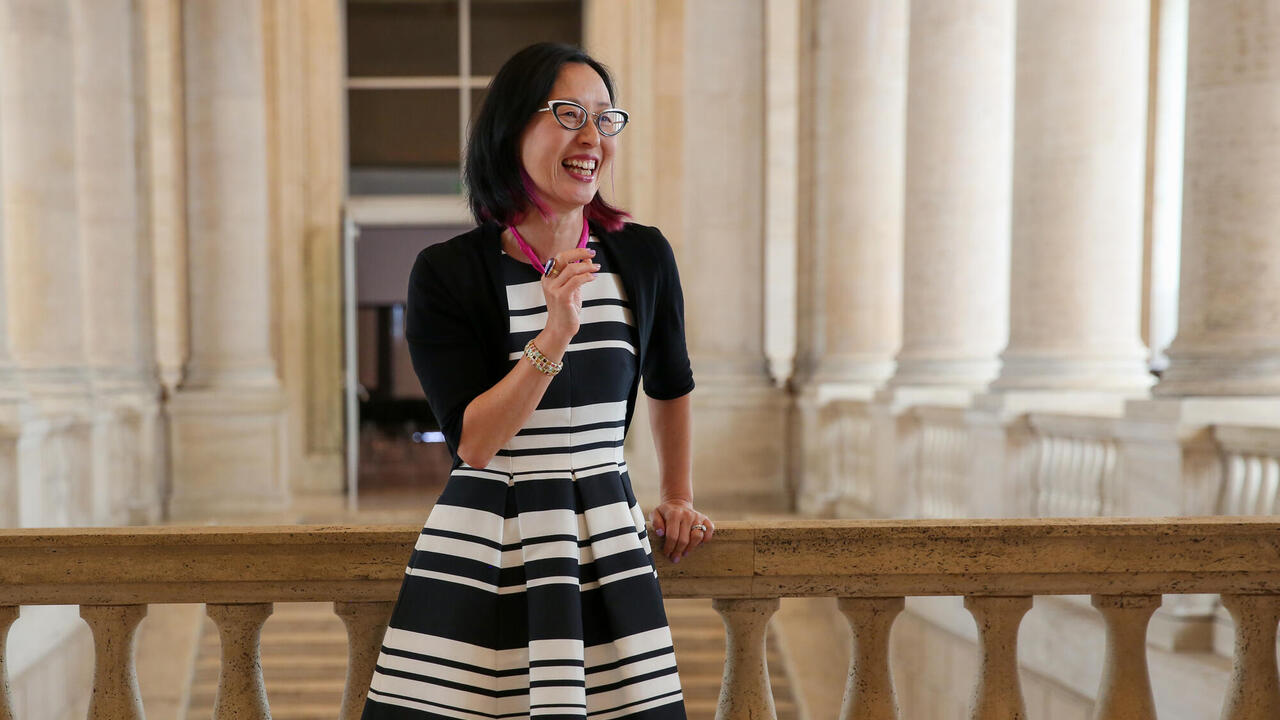How Susana Pilar Channels Death and Diaspora
The artist’s physically gruelling performances reflect on the black body and the possibilities of resurrection
The artist’s physically gruelling performances reflect on the black body and the possibilities of resurrection

Evan Moffitt In 2017, you presented your performance Dibujo intercontinental (Intercontinental Drawing, 2017) in Venice, dragging a small boat on a rope, tied to your waist, as you crossed a piazza. Thousands of Africans were brought to Cuba on ships as slaves; many of their descendants, centuries later, fled the country by boats bound for the US. What did you hope to achieve by performing this kind of labour for a public audience?
Susana Pilar I did this performance as a way to reflect on my Chinese and African ancestors who were brought to Cuba under false promises or against their will. I see myself as a result of these trips and carry this heritage with me. Cuba was built by migrants. In towing the boat, I was towing the history of my family, my ancestors’ sea voyage, the stories of Africans who cross the sea today and my own experience as a black woman. The boat was made of solid wood; it was heavy and I only managed to move it a little bit.
EM Do you subject your own body to such strain as a way to reflect on different kinds of bodies – of land, water, the Cuban people?
SP Although I am always naturally my first reference, the work is not only about my personal or family history; it is also about all migrants who have drowned at sea, as well as those who made it to solid land. In the performance, I am not one body but many bodies: the body of Africa, of China, of Cuba. The body of the Migrant.

EM In Re-territorialización (Re-territorialization, 2016), you dealt even more viscerally with the idea of displacement, cutting and braiding your pubic hair onto your head, and the hair on your head into your pubis. How did you conceive of that gesture as a metaphor?
SP This gesture came to mind while visiting family members in Europe. I started to consider all the parts into which I am emotionally divided – the ones that reveal where I come from and the ones that show where I really belong. Why do people who were once colonized migrate to the countries that once subjugated them? The exchange of hair from one bodily territory to another was a way to explore this kind of placement, displacement and replacement.
EM That work evoked, for me, the performances of Ana Mendieta. Where do you find artistic inspiration? Are there particular artists or cultural sources you keep coming back to?
SP The artists that most inspire me are Mendieta, Otobong Nkanga, Adrian Piper, Tracey Rose, Berni Searle, Cindy Sherman, Mary Sibande and Loló Veleko. But I am most inspired by the women in my family, who have been my greatest source of support.
EM You incorporated and transformed your hair in another performance, El tanque (The Tank, 2015–16). Why is the act of physical transformation, which is central to performance in a way that isn’t always possible in other media, so important to your work?
SP Hair is a very important element of black identity, and its physical transformation has always been intersected by historical, cultural, racial and political concerns. With performance, I can make public rituals of transformations usually hidden from others. This is a way for me to express pride in who I am and protest colonial standards of beauty that we have been forced, as black people, to subscribe to.

EM In your 2006–07 work El escándalo de lo real (The Scandal of the Real), you had yourself inseminated with the semen of a man who had died 72 hours before, performing a kind of ‘resurrection’ in vitro. To what extent did you understand the work as a performance? Who was its audience?
SP This action was a choice to give birth in a non-conventional way and to affirm that there are no limits between life and death. It affected me mentally and emotionally. I am not sure I feel able to speak more about it.
EM Do you think performance has physical or conceptual limits?
SP I think performance has no physical or conceptual limits. I believe it is the form of creative expression closest to life itself.
This article first appeared in frieze issue 206 with the headline ‘The Lives We Tow’.
Main image: Susana Pilar, Dibujo intercontinental (Intercontinental Drawing), 2017, performance documentation. Courtesy: the artist and Galleria Continua, San Gimignano/Beijing/Les Moulins/Havana; photograph: Oak Taylor-Smith
























